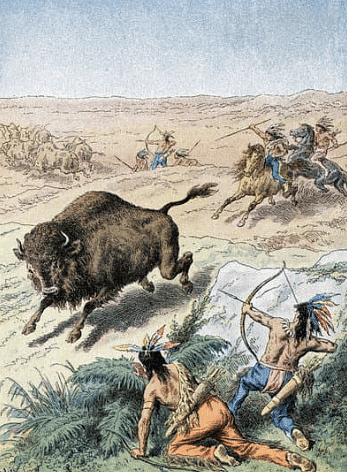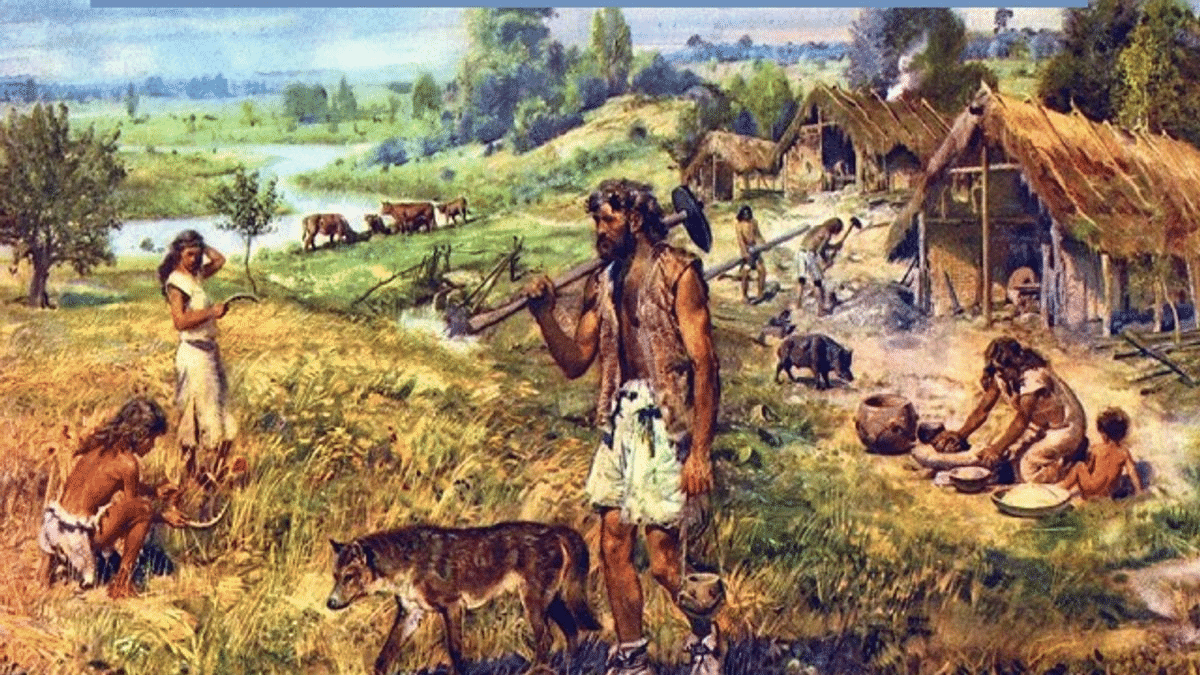From Hunting-Gathering to Growing Food Class 6 Worksheet History Chapter 2
Q1: Fill in the blanks
(i) Millets have been found at ______.
Ans: Hallur
(ii) People in Burzahom lived in ______ houses.
Ans: Pit
(iii) Chirand is a site in ______.
Ans: Bihar
(iv) ______ and ______comes from animals that are reared.
Ans: Milk, Meat
(v) ______ is one of the earliest villages.
Ans: Mehrgarh
 Hunters
Hunters
Q2: State True (T) or False (F).
(i) Jadeite, found in Daojali Hading, may have been brought from China.
Ans: True
(ii) Young women are respected for their wisdom and experience.
Ans: False
(iii) Mehrgarh site is in Pakistan.
Ans: True
(iv) The Bolan Pass is one of the most important routes into India.
Ans: False
(v) Gufkral site is in Kashmir.
Ans: True
Very Short Answer type questions:
Q1: Which two Neolithic tools are used to grind grain even today?
Ans: Mortars and pestles are used for grinding grain.
Q2: Where people store the grains?
Ans: They began making large clay pots, or wove baskets, or dug pits into the ground to store grains.
Q3: Name two sites found in Andhra Pradesh.
Ans: Hallur and Paiyampalli
Q4: Which were the earliest animals to be domesticated?
Ans: The earliest domesticated animals include sheep and goats.
Q5: Explain the term ‘Domestication’.
Ans: It is the name given to the process in which people grow plants and look after animals.
 Hunters and gatherers
Hunters and gatherers
Short Answer type questions:
Q1: Write a short note on Bolan pass.
Ans: Bolan pass is situated in the Sulaiman Range of Himalayas. It connects the Indian subcontinent with Iran. This pass was used by traders and invaders to reach India.
Q2: What was the purpose of the construction of pit houses?
Ans: These were provided with the steps. This may have been constructed to get protection from the cold temperatures.
Q3: What do you think would have been cooked in the jars by early man?
Ans: People started using pots for cooking food. Grains like rice, wheat, and lentils were cooked by them. Also, these pots were sometimes decorated.
Q4: How was fire discovered?
Ans: Humans learned to produce fire by rubbing two pieces of stone. This discovery was an accidental invention. They started to use fire for cooking food, for light and heat, and to scare wild animals.
Q5: Where did the Stone Age man live?
Ans: The Stone Age man lived in hilly areas by the side of rivers or a lake. In the beginning, he took shelter in caves, rock shelters, and later in mud huts. He lived by the side of a lake or river to quench his thirst and for food, i.e., animals and fish.
Q6: What is a burial?
Ans: A burial is like a special ceremony for someone who has passed away. It's a way for people to show respect and take care of the person who has died. People believe in different things, and some think there might be another life after death. So, a burial is a thoughtful way to handle and say goodbye to someone who's no longer with us.
Q7: What were the climatic conditions in the Neolithic period?
Ans: In the Neolithic period, climatic conditions became favorable and habitable. The areas became warmer, so there could be dense forests. Now, due to the warmth in the climate, ice-covered dry areas have become open grassland.
Q8: What types of tools did Neolithic people use to grind grain?
Ans: Neolithic people used tools like mortars and pestles to grind grain, which are tools still used for grinding even today.
Q9: Why did early humans prefer to live near sources of water?
Ans: Early humans preferred to live near sources of water like rivers and lakes because water was essential for drinking, cooking, and helping plants and animals survive.
Q10: How did pit houses help people in Burzahom?
Ans: Pit houses in Burzahom, which were dug into the ground, provided shelter from cold weather and protection from harsh environmental conditions.
FAQs on From Hunting-Gathering to Growing Food Class 6 Worksheet History Chapter 2
| 1. What is hunting-gathering? |  |
| 2. Why did humans transition from hunting-gathering to growing food? |  |
| 3. What are the advantages of growing food over hunting-gathering? |  |
| 4. How did the transition to growing food affect human societies? |  |
| 5. What were the major crops grown during the transition to agriculture? |  |

















